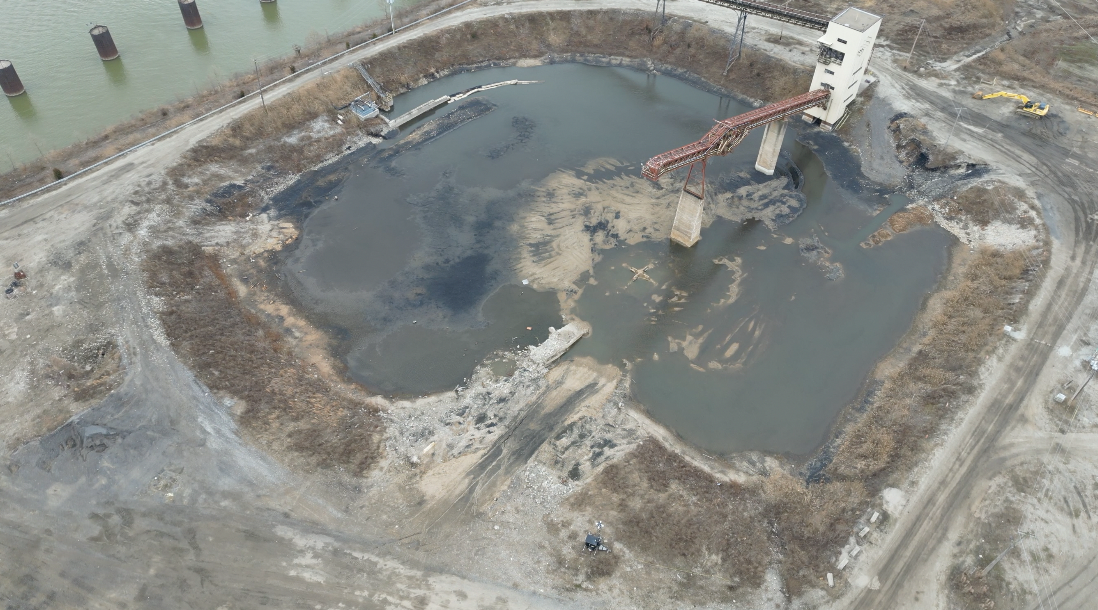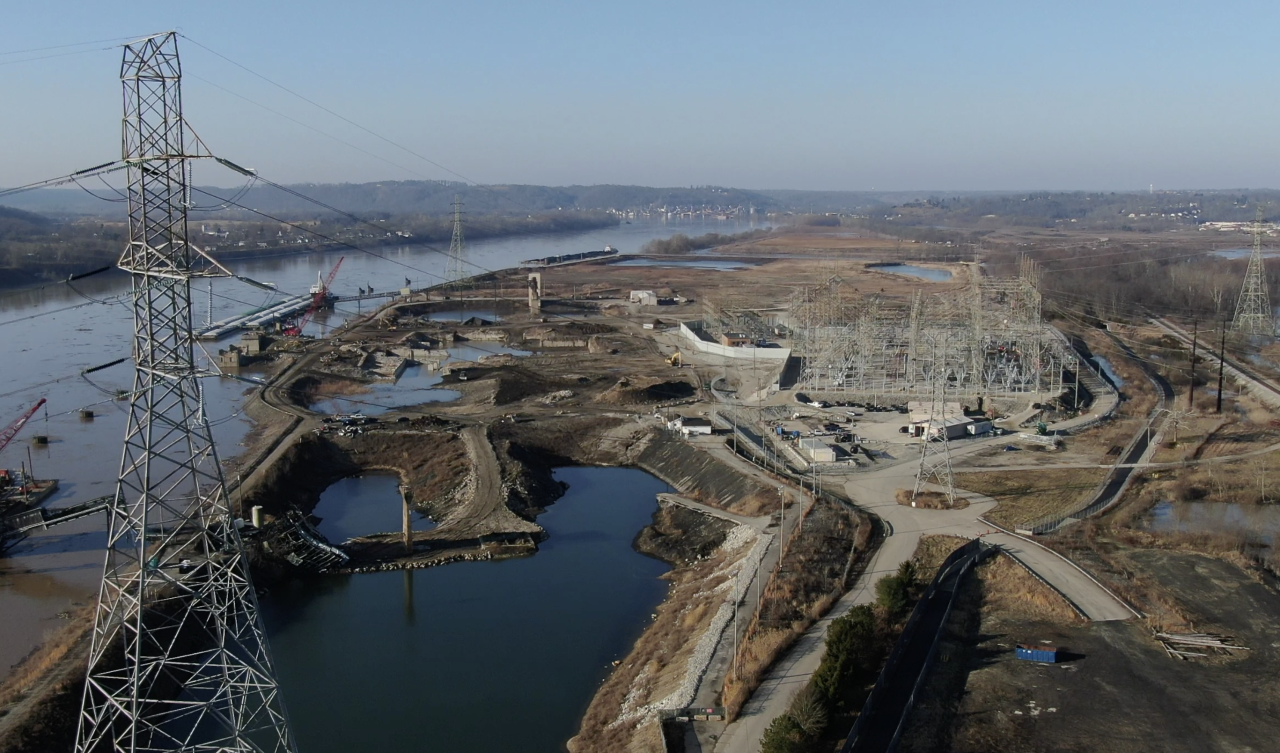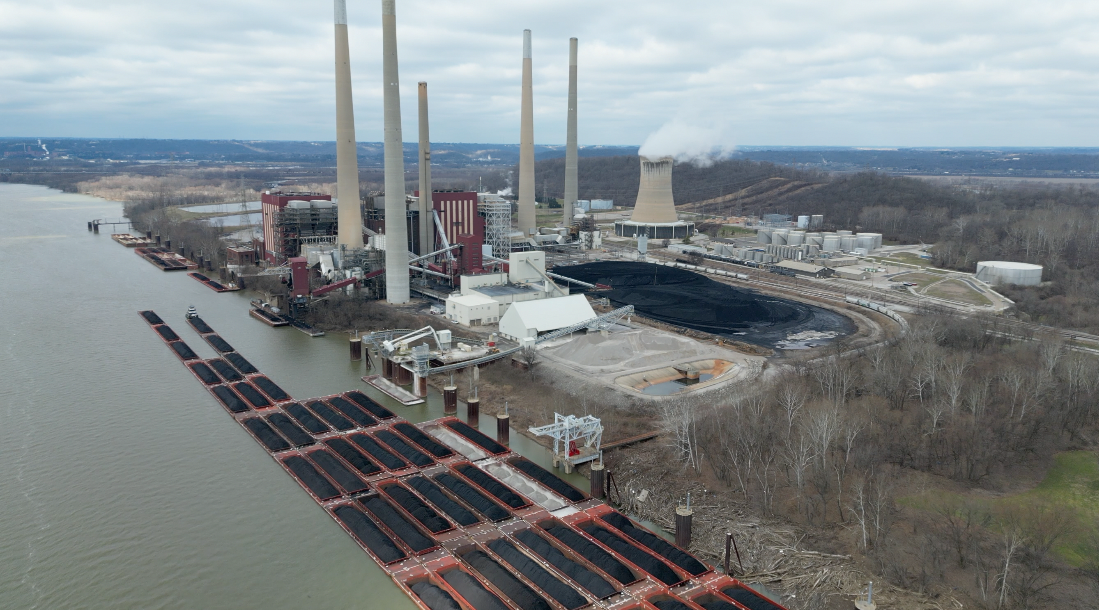CINCINNATI — Arsenic, mercury and lead are some of the toxins contained in leftover coal ash from generations of power plants that operated along the Ohio River — which is the drinking water source for 5 million people.
When utility companies retired coal plants, they left the by-product ash behind in unlined pits, ponds and landfills.
For years environmentalists and local officials complained that ash was leaking into groundwater and being scoured by the Ohio River. But the U.S. EPA had little regulatory ability. These old coal sites were exempt from current rules because they closed before the agency enacted rules overseeing them in 2015.
They existed in a grandfathered-in no man’s land.
Now the U.S. EPA is considering new safety and health requirements for these legacy sites, including several retired coal plants in the Tri-State area.

“There cannot be these sites, where in perpetuity you’re leaving this toxic waste in a place where it's potentially vulnerable to being swept away by a flood from the Ohio River, or the slow leaching over time of the groundwater,” said Thom Cmar, a senior attorney with the nonprofit Earthjustice.
New EPA rules could have huge implications for more than 60 older coal power plant sites nationwide. Earthjustice estimates there are 292 unregulated ash landfills in 38 states with enough coal ash to fill freight train cars that could stretch around the earth twice.
“Coal plants are the major reason why major stretches of the Ohio River and other rivers across this country aren’t safe to fish or swim in,” Cmar said. “For decades what we’ve seen from states like Ohio and Indiana is that they haven’t had clear, strong, consistent standards … to make sure that the pollution that gets into the groundwater is fully monitored and cleaned up.”
Earthjustice sued the U.S. EPA in 2022 over its lack of oversight on behalf of several groups in Indiana, including the Hoosier Environmental Council and the Indiana State Conference of the NAACP.

As part of the settlement from that lawsuit, the EPA announced in early February that it would consider enacting new rules specifically for older coal plant sites. It will issue new draft rules this May and final rules by May 2024.
“Coal ash if it's kept dry and away from any water source, be it surface water or groundwater, it can be contained at a fairly low risk in a modern landfill with a liner underneath and a cover over the top,” said Tim Maloney, senior policy director of the Hoosier Environmental Council.
But when leftover coal ash is stored in unlined ponds or pits, on the Ohio River floodplain, Maloney said it guarantees that it will get wet either from rainwater pouring down from above, or groundwater coming up from below.
“Water essentially weaponizes the coal ash,” Cmar said, because of toxins like mercury, arsenic and lead.

Coal ash exposure causes higher risk of cancer in the skin, liver, bladder and lungs, as well as neurological and psychiatric effects, cardiovascular impacts, damage to blood vessels and anemia. It also threatens plant and animal wildlife, causing elevated selenium levels in migratory birds, wetland vegetative damage, fish kills, fish and amphibian deformities, and plant toxicity, according to a 2021 lawsuit filed by Clermont County residents against the former Beckjord plant's owner Commercial Liability Partners.
“These sites along the Ohio River are all within a giant flood plain … so when there’s a major storm … the river levels rise, and that causes the groundwater levels to rise as well,” Cmar said. “That can cause even more water to flood into the ash and sweep away pollution, that then ends up potentially in drinking water wells, potentially in the Ohio River.”
These are the three sites in the Tri-State that could potentially be impacted if the U.S. EPA changes its rules on old coal ash landfills and waste pits.
Walter C. Beckjord coal plant
Built in the 1950s as a coal-burning behemoth, the plant pumped electricity to hundreds of thousands of homes and businesses across Southwest Ohio for decades.
Duke Energy closed Beckjord in 2014 and sold the 1400-acre site to Missouri-based Commercial Liability Partners four years later. CLP is demolishing the plant, remediating the site and hoping to attract new development.
CLP did not respond to requests for comment.
The cleanup has not always gone smoothly. Groundwater monitoring wells have stopped working. Residents complained about blowing ash clouds. And a smokestack toppled into the Ohio River during demolition.

The W.C. Beckjord Station, a closed Duke Energy power plant located 20 miles east of Cincinnati, contains more than 10 billion pounds of toxins that are packed into ponds along the banks of the Ohio River.
The biggest concern, however, has been county water.
Millions of tons of coal ash are stored in unlined ponds in the river’s floodplain and directly upstream from Clermont County’s primary drinking water wellfields, which serve 130,000 people.
Clermont County Director of Utilities Lyle Bloom sent a letter to the U.S. EPA on Jan. 4, asking for more oversight of the coal ash that is stored at Beckjord.
“One of Clermont County’s primary drinking water wellfields lies directly adjacent and down gradient from the coal ash impoundments,” Bloom wrote. “Significant concentrations of sulfate in the groundwater (along with other contaminants) originating from the former Beckjord Power Station coal ash impoundments continue to threaten our well field and the environment.”

County leaders worry that coal ash is leaking into the groundwater. They want the ash removed and taken to a sanitary lined landfill.
And Cmar said that could happen under new U.S. EPA rules next year.
“If there is evidence that groundwater is getting into the ash that’s stored at the Beckjord site, then they would be required to remove it, they would not be allowed to leave it there,” Cmar said.
Tanner’s Creek Generating Station
Tanners Creek was a workhorse for American Electric Power, generating energy since 1951 before its retirement in 2015.
A year later, AEP sold the plant to a brownfield redevelopment company, Missouri-based Commercial Development Company, with plans to create Indiana’s fourth port. State and local leaders celebrated the sale, which was expected to create thousands of jobs and millions in tax revenue.

WCPO reported in 2021 that the deal fell through, in part, because the property couldn’t be developed due to the potential harmful remains of coal ash.
In 2018, the Ports of Indiana hired a consultant, ATC Group Services, which conducted a subsurface investigation of the Tanners Creek site. It found potentially harmful coal ash as deep as 40 feet below the surface, with soil and groundwater contamination by heavy metals.
Maloney, of the Hoosier Environmental Council, said Tanner’s Creek is one of the more problematic sites in Indiana.
“Contamination is pretty widespread throughout the property, both in the soil and in the groundwater … it's never been well properly evaluated,” Maloney said.
CDC did not return requests for comment.
There are numerous sites at Tanner’s Creek where coal ash is present, Maloney said: a main ash pond, a restricted waste landfill which also accepts coal ash, a fly ash pond, a slag pond and a bottom processing area on site.

This shot of Lawrenceburg from above shows the former Tanner's Creek Generating Station, which closed in May 2015.
“Together that's about 19 acres,” Maloney said.
Of particular concern is the main ash pond, where he said 2.6 million cubic yards of waste are stored in an unlined area, and a separate fly ash pond which is located very close to the municipal well field.
“Our estimate is that it’s as close as 500 feet from the edge of the fly ash pond to the well field …and this is a well field for the town of Aurora and for the Lawrenceburg Manchester Sparta Conservancy District,” Maloney said. “We know that from our work down there that the water utilities are still very concerned about that … they've they've seen some elevated levels of boron in their raw water.”
For now, the drinking water is safe. But Maloney worries about the future.

“There is no indication that that their drinking water is unsafe because it's being treated, but it is at risk from the coal ash,” Maloney said. “They can certainly treat any contaminants in the wells and, make the water safe for drinking … the risk is that sometime in the future that the contamination would be so great, that that it's cost prohibitive to treat it, and then they'd have to find new wells.”
New rules could also force more comprehensive groundwater testing, Cmar said.
“You can’t clean up pollution until you know where it is,” Cmar said. “At Tanner’s Creek … there’s a major hole in where the company monitors to see if there is pollution. So currently there may be pollution that’s reaching those drinking water wells that’s going undetected.”
Luminant Miami Fort Power Station
This once major coal-fired power station near North Bend in Miami Township, is near the tri-point of Indiana, Kentucky and Ohio.
Duke Energy shut down Miami Fort’s first unit in 2008 and closed another coal boiler in 2015. It’s new owner, Texas-based Vistra Energy plans to retire the remaining operating units by 2027.

Although the power plant is still operational and not considered a legacy site, Earthjustice has identified one old landfill on site that could be bound by new EPA rules if it contains coal ash.
When first asked, a Vistra spokesperson said, “Miami Fort does not have legacy landfills so we do not believe the anticipated rule will apply. In accordance with EPA’s regulations, we are planning to close the surface impoundment at Miami Fort by no later than October 2028 and will conduct all groundwater monitoring and post closure care in accordance with applicable state and federal requirements.”
Then WCPO asked specifically about a landfill on Miamiview Road that was identified by the U.S. EPA in a 2014 risk assessment, provided by Earthjustice senior attorney Abel Russ.
After looking into it again, a Vistra spokesperson said this: “There is a landfill that was closed, long before Vistra assumed ownership, in accordance with requirements at the time. Right now, we do not believe the anticipated rule would impact Miami Fort, but we won’t know definitively until we see a rule from the EPA.”
“The Miamiview Road landfill is exactly the kind of issue that we think EPA should address,” Russ said.






